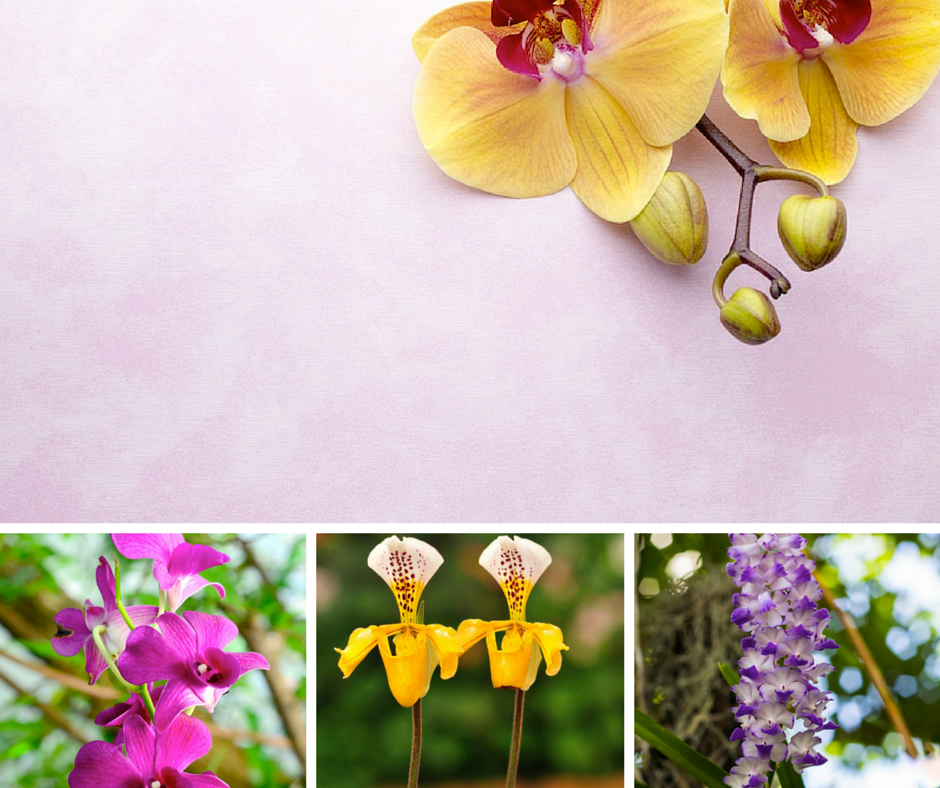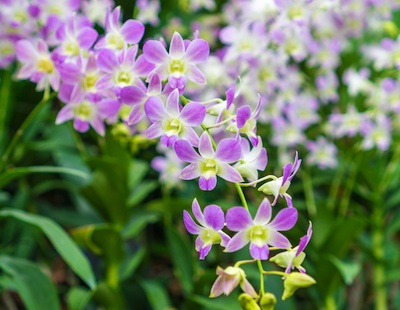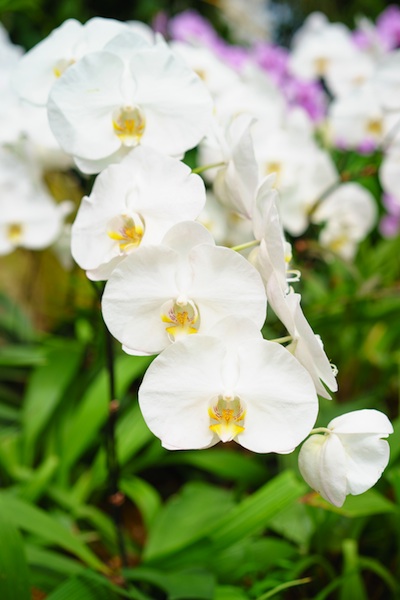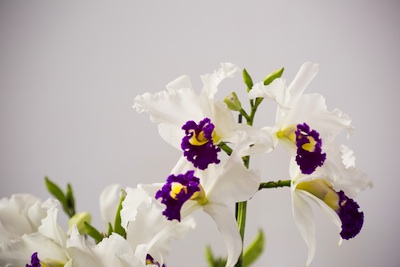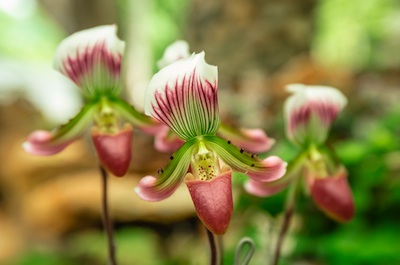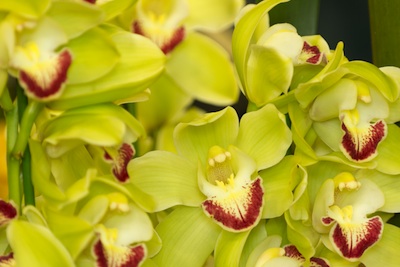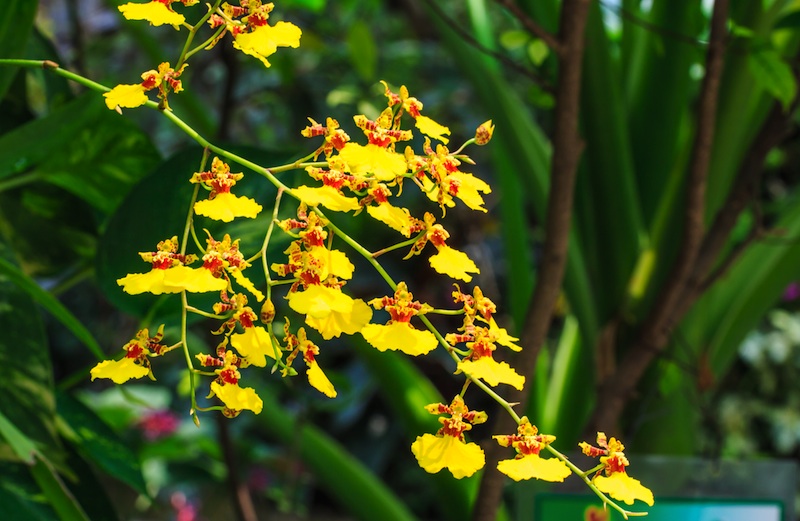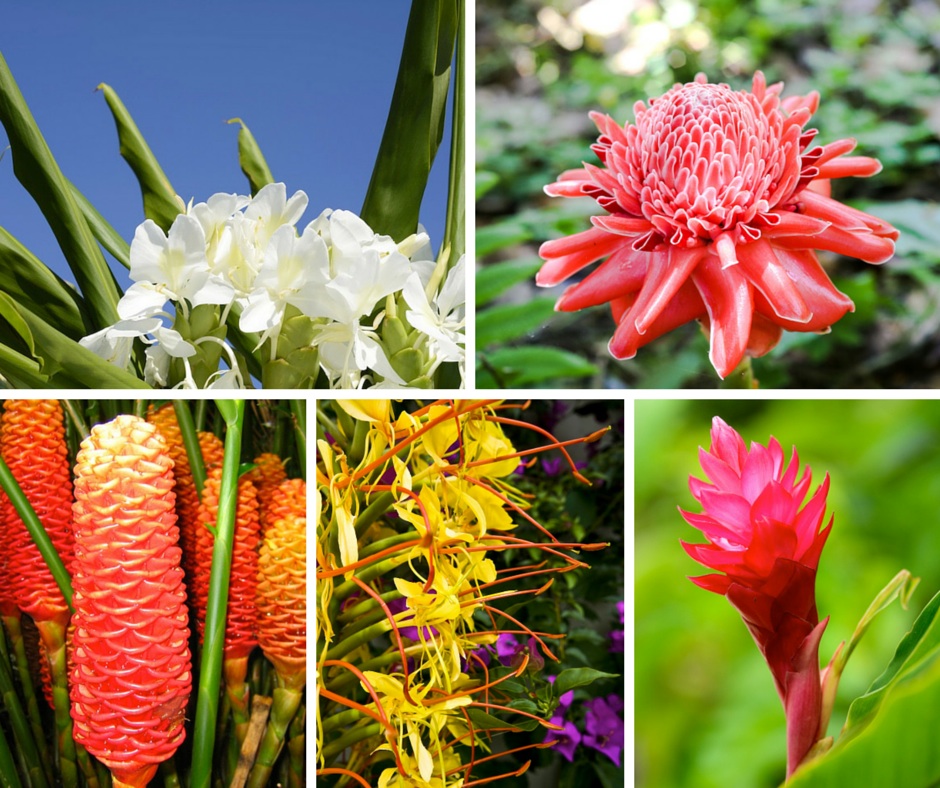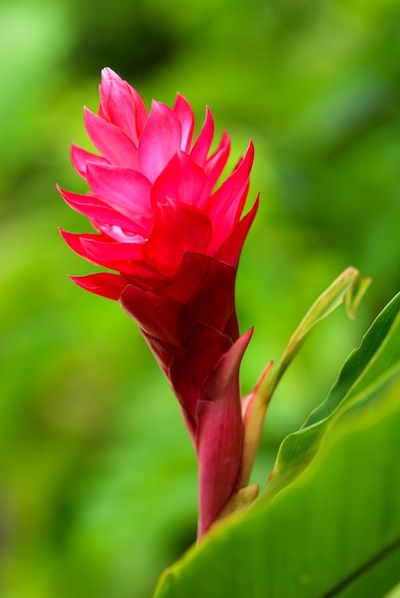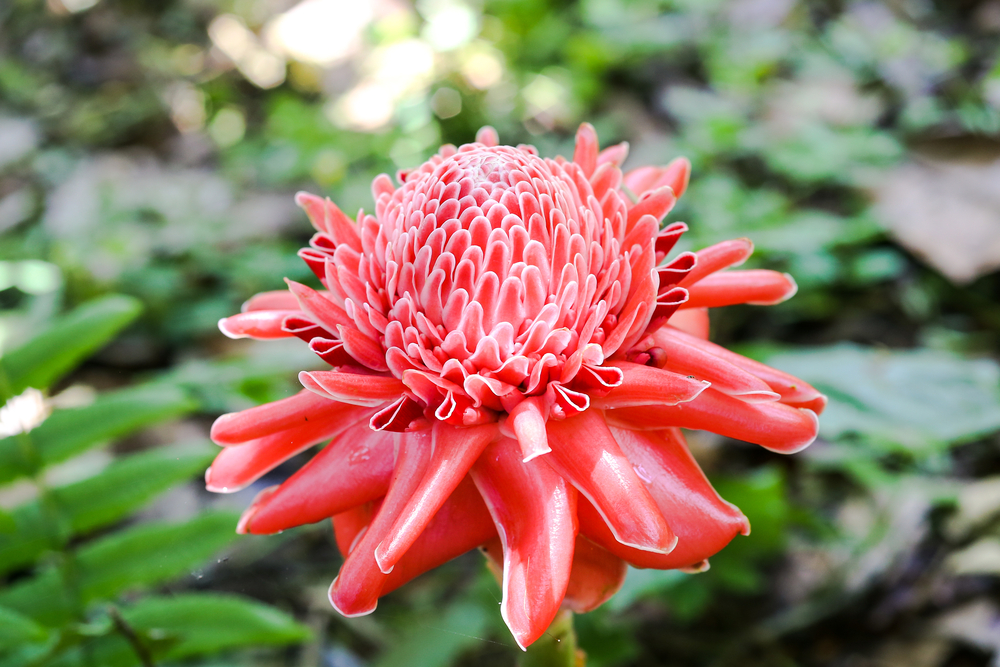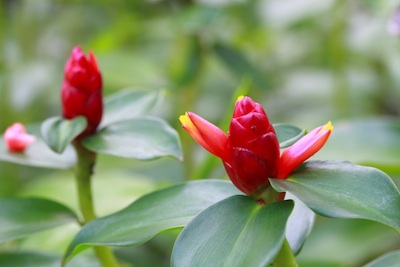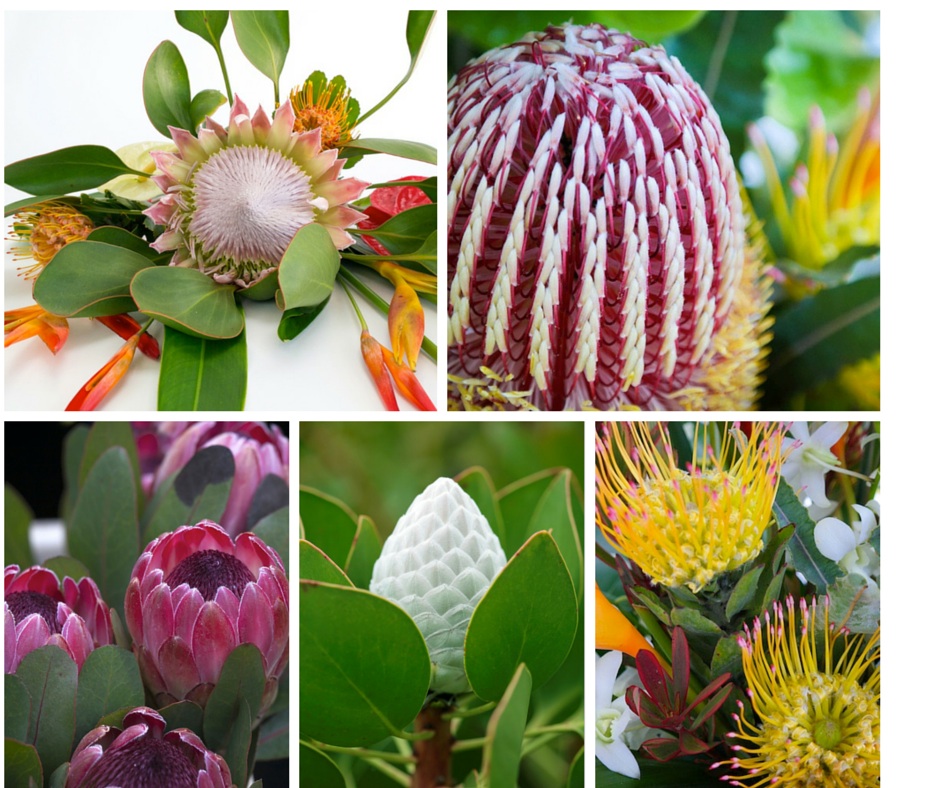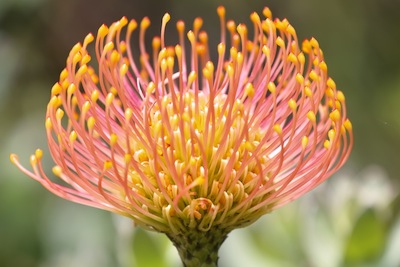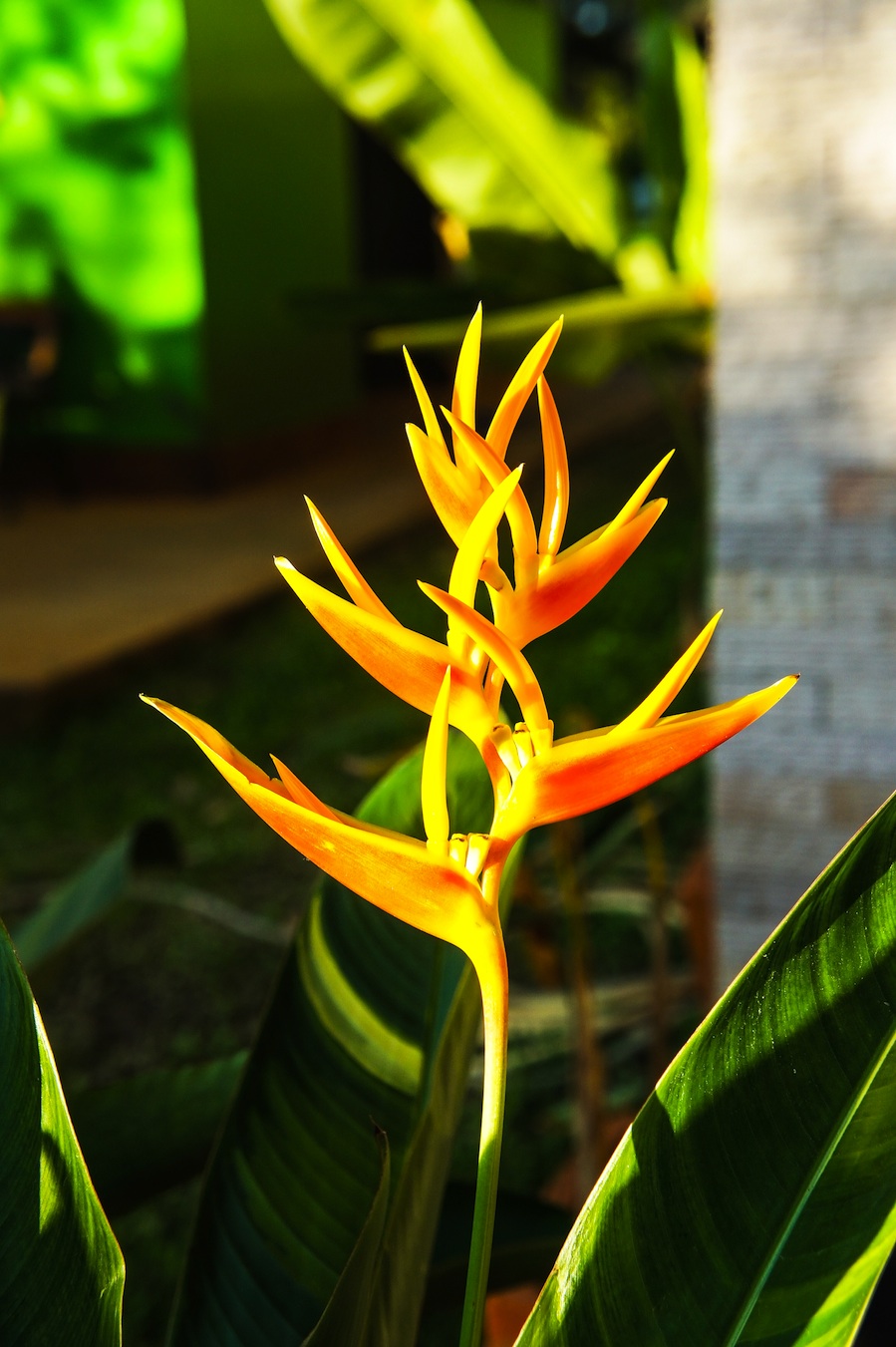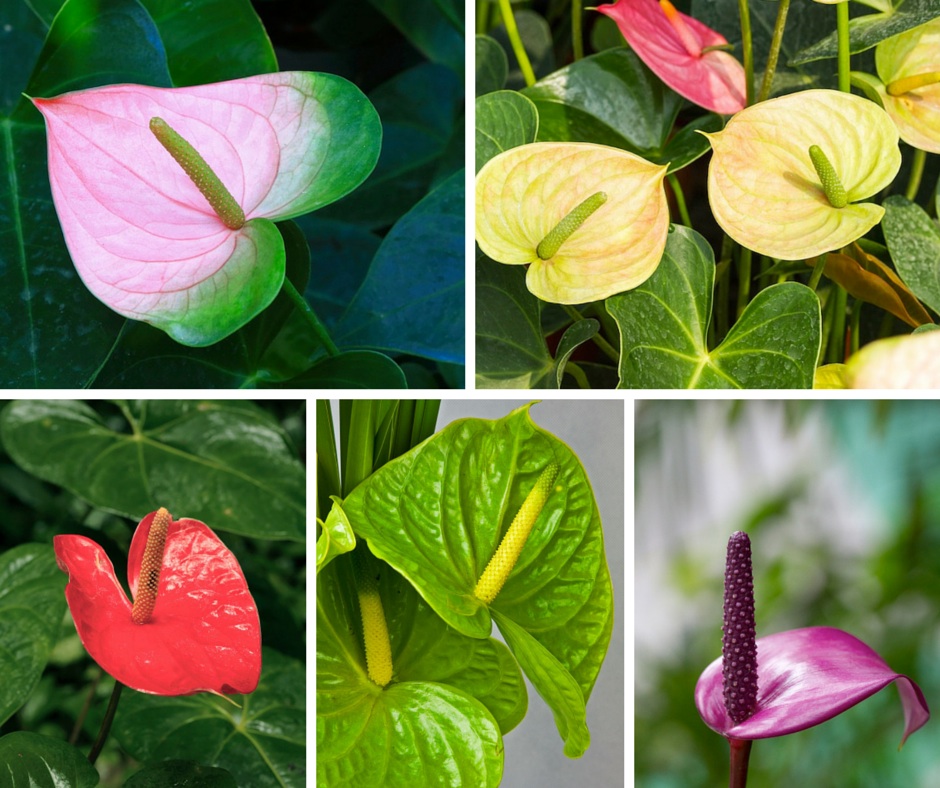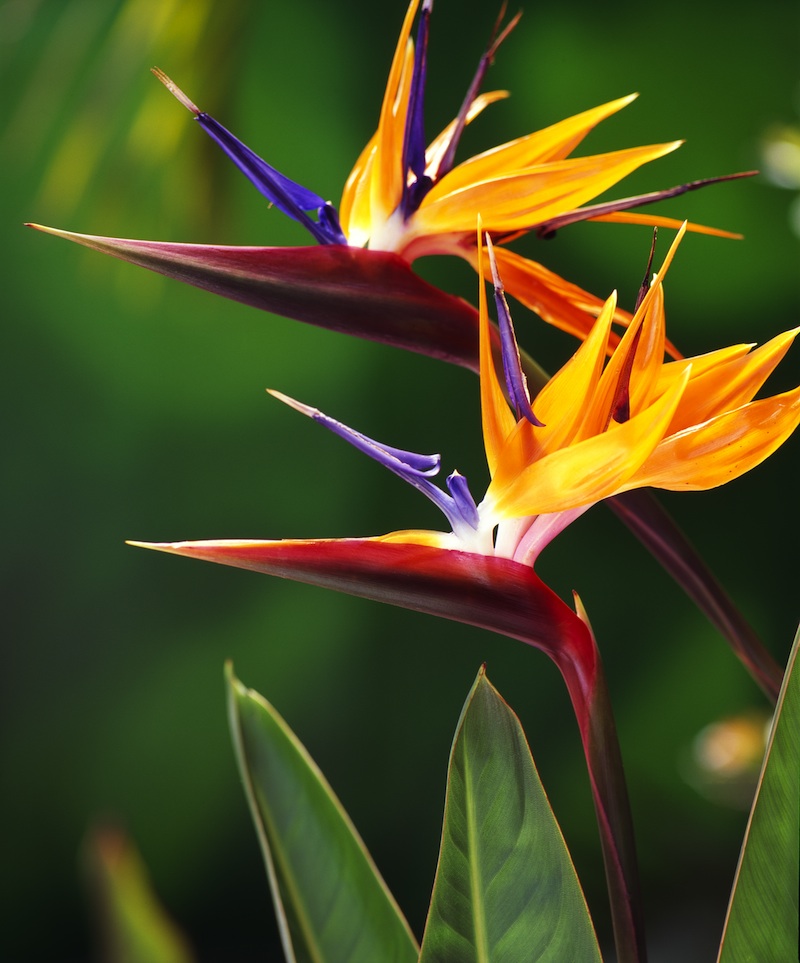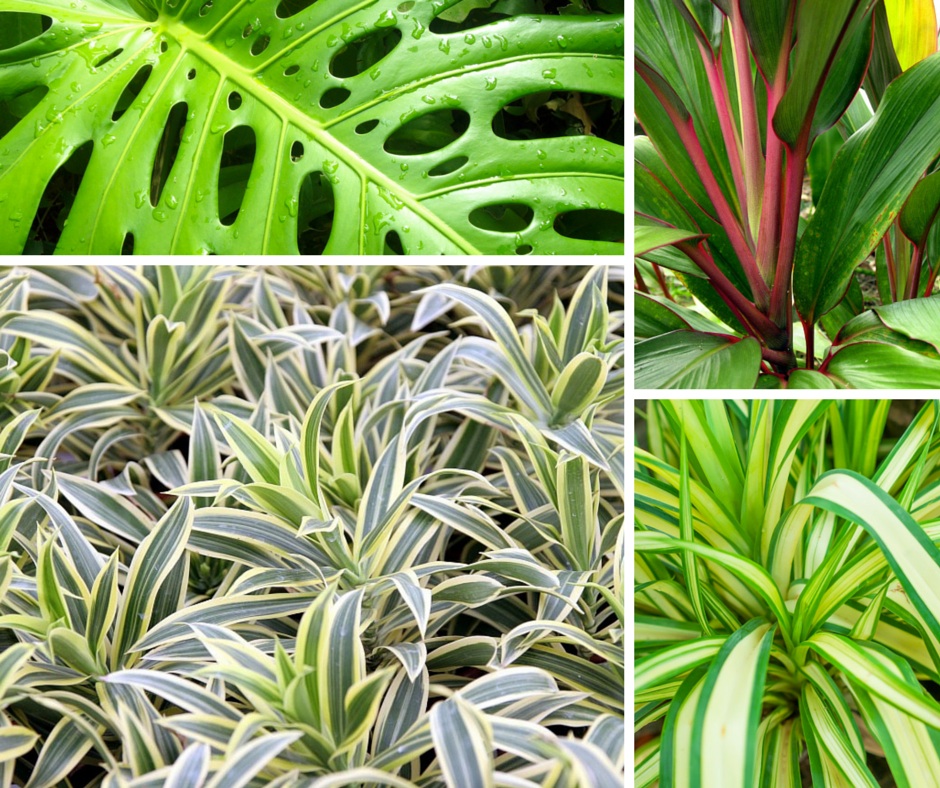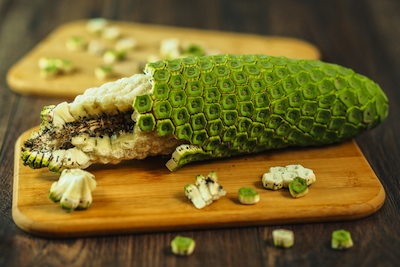Hawaiian Flowers
This Hawaiian flower guide will give you brief descriptions and pictures of our most popular Hawaiian flowers. This will help you identify flowers you have seen in Hawaii or flowers you may have received as gifts. When you send Hawaiian flowers it is helpful to know the many beautiful tropical flowers that are available.
There are many beautiful tropical flowers to be found in Hawaii.
We hope you find our Hawaiian flower guide both informative and inspirational.
Hawaiian Flower Guide
Orchids
Orchid cultivation in Asia goes back thousands of years. Orchids were introduced to Europe in the early 1800’s.
For more about orchids and their care we suggest the American Orchid Society website. They also have a Facebook group with helpful hints from growers of all levels.
Dendrobium Orchids
Dendrobium is easy to care for. They bloom most in the summer months and flower production can slow in the winter.
We use on many different styles of Hawaiian leis, Talented lei makers can create beautiful and complicated lei styles using these simple orchid blooms
Phalaenopsis Orchids
The phalaenopsis orchid derives its name from the moth-like shape of the bloom. They are mostly native to parts of Asia.
Cattleya Orchids
Cattleya orchids are named for William Cattley who was the first to make this native of Central and South America bloom in the United Kingdom.
The flowers are large and many resemble daffodils. Most are shades of purple though cattleya is found in almost every color. Cattleya is often called the ‘Queen of the Orchids’. They are popular for corsages due to their large size, beauty, and fragrance.
Paphiopedilum Orchids
‘Paph’s’ are also known as Lady Slipper orchids due to the shape of the flower. They are primarily found in Southeast Asia and the surrounding areas. A similar flower called Cypripedium grows on forest floors and is the state flower of Minnesota where it goes dormant during the harsh winter.
The medium sized spikes produce a fairly large, single, long-lasting bloom. They are very popular among hobbyists and many hybrids have been created. Smaller plants may only produce one bloom with more as the plant gets older.
Cymbidium Orchids
Cymbidium orchids are also called ‘Boat Orchids’ as their name comes from the Latin word for ‘boat’. They are native to Southeast Asia and are now more widely grown, especially in China.
Like most orchids, they are found in a large variety of colors. Most common are pinks and greens, with some orange. Cymbidium is often used in wedding bouquets. Some are fragrant.
Oncidium Orchids
Oncidium are native to Mexico and parts of the Caribbean. They have star-shaped petals and a prominent lip. Most are yellow, purple or red.
One of the most popular varieties is the Sharry Baby which is dark purple. It has a mild fragrance similar to chocolate or vanilla.
They bloom along spikes or sprays and the blooms are long-lasting. They are also popular as a cut flower for tropical flower arrangements.
Hybrids
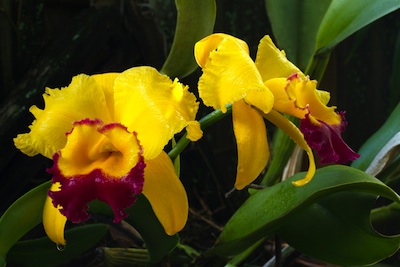
Thousands of orchid hybrids exist. Growers and hobbyists continually create new orchid species and varieties. Many even occur in nature.
Gingers
Red and Pink Ginger
There are a variety of ginger flowers in Hawaii. The most common is the tall red or pink ginger Alpinia purpurata.
This ginger flower is used for both arrangements and landscaping. They can grow up to 10 or 15 feet tall. The red or pink ‘flower’ is not the actual flower of the plant. These are called bracts and a small, white flower will emerge from each bract at it matures.
Torch Ginger
Another member of the ginger family is the large torch ginger. This is a tall and large red flower named for its resemblance to a burning torch. It is a heavy bloom and should only be used in larger flower arrangements.
This large flower should also be immersed in water for 10 minutes to extend it’s display life.
Costus Ginger
Also called Indian Head Ginger this is a tubular bloom that grows on a medium size shrub. Native to South America costus flourishes in Hawaii. The unusual blooming style opens lip like petals from the top of the flower.
Fragrant Ginger
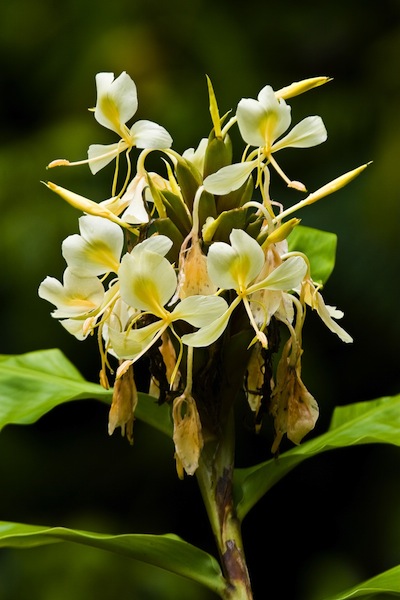
Some gingers are very fragrant, though they are not suitable for flower arranging due to the short life cycle of the bloom, unless cut immediately before use.
Native to India these yellow or white blooms resemble butterflies when open. When in bloom they fill the surrounding area with a perfume like fragrance. They often grow along hiking trails in Hawaii.
Protea
The name of the protea comes from the Greek god Proteas. This was a sea god who could change into many forms. The name was chosen because these flowers are found in many different forms as you can see. They are prized for their intricate beauty and unusual forms often likened to something from pre-historic times.
Protea originated in Africa and are now grown in Hawaii, mostly on the higher areas of Maui including Kula and Makawao. They also grow well in Australia. Farms can be found in more that fifteen countries around the world.
Protea is a winter bloomer in Hawaii so production can slow from May to as late as October.
King Protea
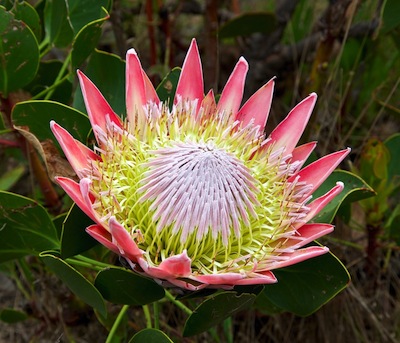
As the name says this is the ‘king’ of the protea flowers and the largest. This striking bloom can be six inches or more across. They are pink to near red with dark green leaves, a thick woody stem and a velvet-like feel. The bush, also called a sugarbush can be up to three feet tall. The flower will remain beautiful after drying. They are pollenated by birds that feed on the nectar as the pollen is too deep for insects to reach.
King protea is the national flower of South Africa.
Grows well on Maui as do most protea.
Mink Protea
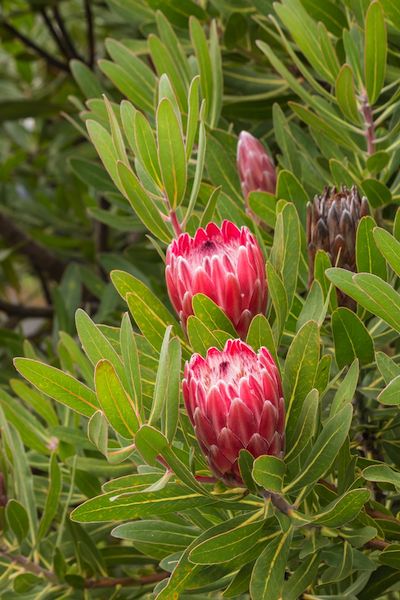
Minks are a feathery, long compact flower. Colors include pinks and grey-black. They can be up to five inches long and about 3 inches across. Like many protea they grow on a large shrub.
Mink protea can be kept as a dried flower or turned upside down to craft a ‘Hula Girl’.
Pincushion Protea
Pincushion protea grow on a small, evergreen shrub. Many exotic birds enjoy feeding on the nectar of the pincushion protea.
Banksia
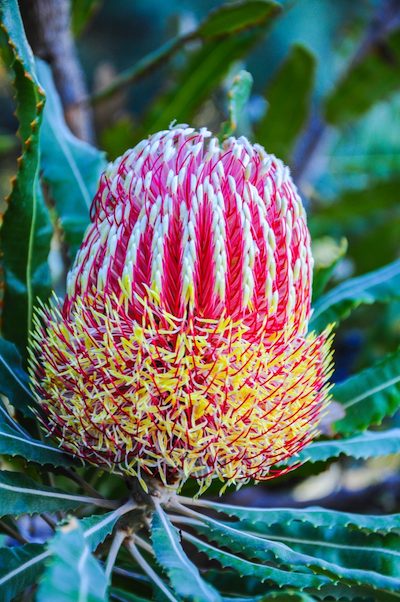
A native of Australia, there are several types of banksia flower. Most are red or green with some shades of yellow or pink. They come in shapes from a compact bottlebrush to a taller cone shaped flower.
Banksia grow on both trees and shrubs. They bloom with a set of tiny spikes, each with a flower. This gives them their brush-like appearance.
They are named in honor of botanist Joseph Banks who travelled with Captain Cook in the late 1700’s.
Safari Sunset
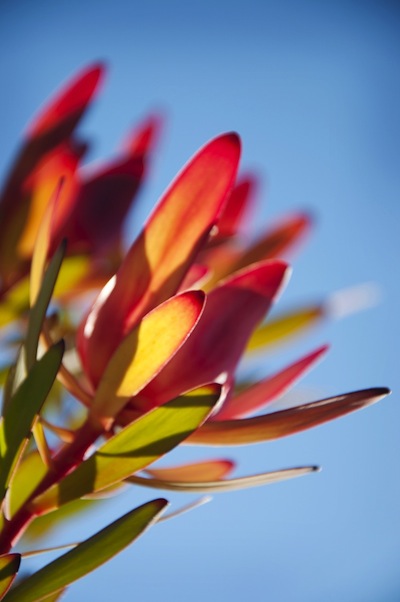
Also called Leucadendron the Safari Sunset is a dark red flower that grows on a bush. Its shape resembles a rose bud and is actually a cone of bracts surrounding the true flower. The foliage goes from green at the base to more reddish closer to the bloom.
Heliconia
Heliconia flowers are a varied collection of more than 200 types of tropical flowers. Most are native to South America though they are grown in many tropical locations and rainforests. The name comes from the Greek mountain said to be home to the Muses.
Like many tropical flowers used in Hawaiian flower arranging the beauty and color is found in the bract of the plant from which tiny flowers emerge. The bracts collect water and provide a habitat for some tiny aquatic organisms. Only certain birds are able to access the nectar because of their specialized beaks.
Upright Heliconia
![]()
Upright heliconia are the largest of the these flowers. They grow on tall, thick stems and open in a shape sometimes called the ‘Lobster Claw’. The most common color is deep red and they are also found in pink and yellow. They are a heavy flower and add to flower arrangements.
Tropic Fleur Heliconia
Tropic fleur heliconia are sometimes mistaken for bird of paradise because of their shape. They do not burst open so fully as bird of paradise. They are yellow in color and can be up to five or six feet tall on the stem.
Psitticorum Heliconia
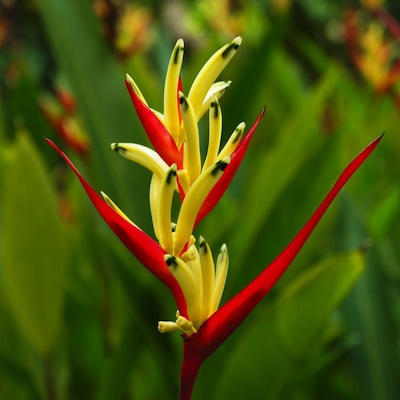
Psitticorum or ryzo heliconia are smaller and more delicate in appearance than most other members of this family. They are also used in landscaping where the weather permits. Colors range from yellow to orange or pink.
Pendant Heliconia
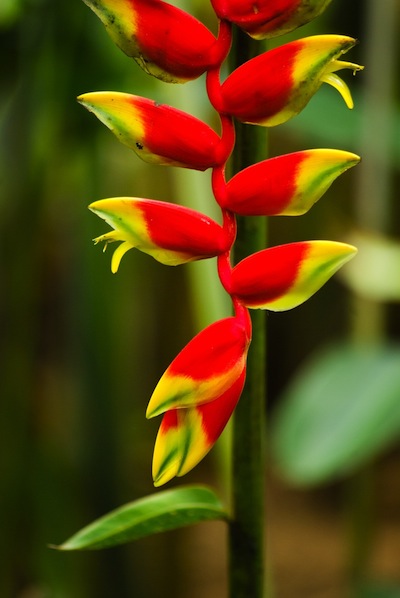
One of the most beautiful and unusual of the tropical flowers! Pendant or hanging heliconia are marked by bracts that hang down from the supporting stem. They are prized for Hawaiian flower arrangements.
The most common color is bright red with yellow edges with parrot beak bracts. Some are pink with a peach-like fuzz.
These flowers are easy to care for. First, cut about an inch off the base of the stem. The stems are strong and can be a little tough. You can soak the entire flower under clean, lukewarm water for about ten minutes. This will extend the life of the blooms. They can be a heavy flower so check the balance of your vase while arranging.
Anthurium
There are more than 1000 different types of anthurium flowers. They are the most cultivated decorative flower in Hawaii. So our Hawaiian Flower Guide must include them. Anthurium vary in size as well a color. Many tropical flower growers have created their own unique anthuriums by crossing existing plants.
The remarkable part of the anthurium is not an actual flower but a bract from which the flowers emerge. This is a flat, wide and somewhat heart-shaped spathe. From the spathe emerges the spadix, a long, tubular extension covered by the tiny flowers.
They are grown outdoors in tropical areas or as an indoor plant. They are sensitive to low or high temperatures, preferring to be between 60 and 80 degrees. Cut stems can last up to a month with fresh water changes and moderate temperatures.
Obake Anthurium
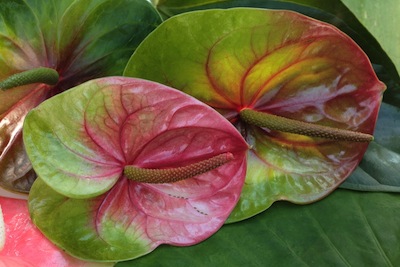
Obake are large, remarkable flowers with variegation of two or more colors. The Japanese word means ‘ghost’ or something that changes. This is because of the color change on the surface of the bract.
Colors include green with a red center also called ‘watermelon’ anthurium. Some are green with a light pink center or green to bright pink.
Tulip Anthurium
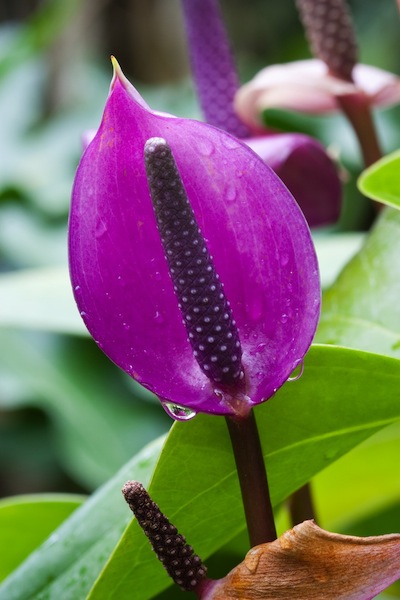
Tulip or novelty anthuriums are smaller and more narrow that standard anthurium. Their spathes tend to be more upright. Varieties include the coral colored Lady Jane, Purple Arc and white Peace Lily. Tulip types may not last so long as their larger relatives.
Purple arc an Lady Jane anthurium are used to make corsages.
Bird of Paradise
Bird of paradise is classic tropical bloom that is found widely throughout Hawaii. This is a must have for any Hawaiian Flower Guide. ‘Birds’ are used both for cut flower arranging and landscaping. It is named for its bird like appearance and is sometimes called the crane flower. This is a large flower on a thick stalk. Take care when handling as the open bracts can break.
Bird of paradise are another popular tropical flower native to South America that is now found throughout much of the world, particularly in the tropics. The common name comes from the appearance that the blooms look like beautiful birds among the tropical greenery. In addition to Hawaii bird of paradise can be grown in California and Florida.
These flowers thrive with ample rain followed by full sun. They open gradually and are usually orange or yellow with sometimes blue flowers. They are a tall flower with large leaves similar to the banana tree. The leaves are also sometimes used in flower arranging. The leaves are broad, long and deep green.
The scientific name for bird of paradise is Strelitzia which is derived from a European duchy.

Tropical Foliage
Tropical foliage adds balance and natural color to any Hawaiian flower arrangement. We have added the most popular greenery to our Hawaiian Flower Guide. Foliage should fill in spaces between cut stems and complete the arrangement.
Many leaves can be used on their own for decorating or lei making.
Ti Leaves
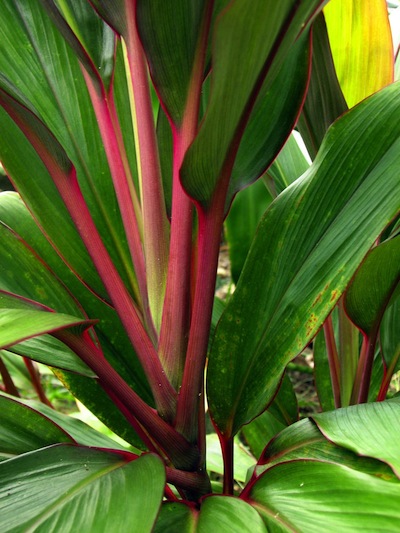
Ti leaves are the quintessential Hawaiian leaf. Ti is used in everything from flower arranging, lei making and hula skirts to cooking. Ti leaves are deep green or purplish red, sometimes with variegation. They do bloom and product a small berry.
To make a lei from ti it is usually frozen or microwaved to facilitate removing the stem or ‘bone.’
Hala Leaf
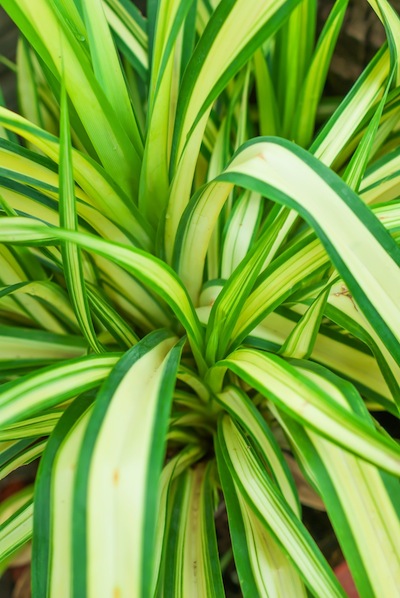
Also called pandanus these long, narrow and variegated leaves grow on the hala tree. Smaller specimens are used for floral foliage.
The hala tree plays an important role in Hawaiian culture. It’s parts are used in association with life changes. The inner sections from the pineapple-like fruit is used in lei making and is edible.
Hala leaf can be kept in water. The top ends can be cut in a chevron shape to add interest.
Monstera Leaf
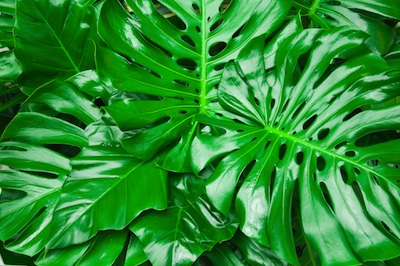
This is a large, wide leaf with many uses. Another import to Hawaii, monstera are native to Mexico and Central America. They are available in many sizes with with mini or small being used most often in Hawaiian flower arrangements. The wider leaves can be used for place settings.
Monstera are also used in landscaping where the leaves can grow to three feet long. It produces a long, cone like fruit that is edible when ripe.
Keep the stem of the leaf in water.
Song of India
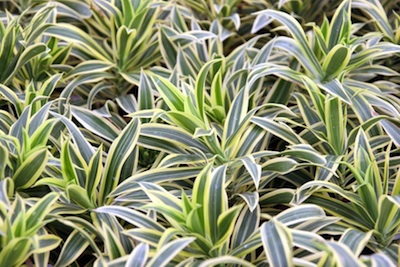
This is an ornamental plant native to islands of the Indian Ocean where it gets its name.
There are many varieties of this plant. The most beautiful is loved for its lovely variegation Song of India is used both in Hawaiian flower arranging and as a specimen plant in landscaping.
Keep the stem in water. The plant might take root and can be propagated in warm areas.
Raphis Palm
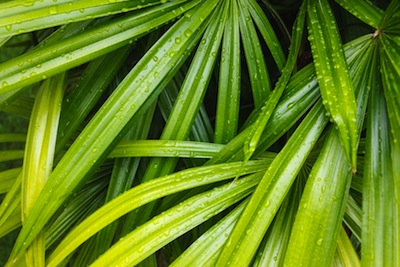
Raphis (ray-fiss) palm is native to China. It is sometimes called the ‘Lady Palm’.
The plant can grow quite tall so it is used for landscaping or as a specimen plant displayed indoors. The leaves are harvested and used for tropical flower arranging.
Like many palm it does flower and produce a rough fruit.
Keep the stem of the leaf in water after cutting.
Thank you for Hawiian flowers guide.







